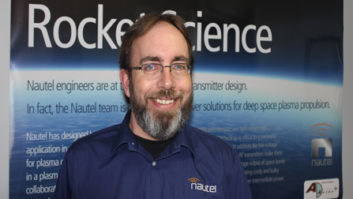Out of mind, but not out of sight
Nov 1, 2007 12:00 PM, Chriss Scherer
[email protected]
As the year winds down, we start looking ahead and wondering what we might expect. In keeping with this, in October, the Consumer Electronics Association released the 2008 version of its annual report titled Five Technologies to Watch. The title is somewhat misleading because it doesn’t focus on five defined technologies, but rather broader strokes. Otherwise, it’s an interesting overview of consumer interest and intent. In addition to radio, the report also looks at GPS and software as technologies to watch.
The section on radio begins with an overview of the state of radio broadcasting and includes terrestrial, Internet and satellite in its coverage. The report touches on music download services in this section, but does not count them as forms of radio because they require the listener to pull the content rather than the content being pushed to the listener. That’s a valid point, and one that I have made before, but while media players may not be considered forms of radio, they obviously take a portion of the potential listening audience away from the radio services.

Digging into the meat of the section, the report provides various statistics about listening habits and advertising trends. Overall, the CEA offers a fair assessment of radio in general, but there were two questions that really stood out.
Twice consumers were asked, �Why do you listen to radio?� The first time it was asked, the question was unaided. Respondents could reply with any answer. The second time the question was asked, possible responses were given. Any researcher will tell you that the way a question is asked is as important as the goal of the question, and this scenario follows that. The same question provided very different results in these two instances.
In the second case, by providing possible answers, the survey question did not actually answer the question why someone listens to the radio, but rather, the aided-response question really defines the features that listeners would miss if those features were taken away.
Two responses have a huge disparity between the results. In the aided response question, the top two answers were that consumers listen to the radio because it is always available and it is free. This is a pat on the back for radio, and the NAB has been touting these features of terrestrial radio for some time.
What’s embarrassing is that when the question is asked with unaided response, these two answers fall to the bottom of the list. Convenience only scored 3 percent, and being free only scored 1 percent. What does that tell us?
The common top reason for listening in both surveys deals with content. Unaided says content specifically, while aided falls into the local info and likely the live/current response. We already know that content is king, and this obviously confirms that belief.
Out of curiosity, I read the 2007 edition (published in 2006) of this report to see if similar information was available. It was not, but I found another survey that was truly alarming.
Another survey asked consumers to rank the most important technology today and in five years. Computers scored well, as did cell phones and TV. Radio, however, has a problem. Radio only scored 1 percent for importance in 2006, and the predicted importance in 2011 was zero. Media players at least held their 1 percent ranking for 2006 and 2011.
So what is radio’s future? It has survived nearly 100 years so far. It will likely survive in some form for many years to come. While radio has a certain importance to consumers, it appears that it is not top-of-mind in importance anymore. Radio continues to be overshadowed by other technologies, but it’s still holding a subliminal space.
Read the entire CEA report at radiomagonline.com/media/2007/1107/5trends2008.pdf
What’s your opinion? Send it to[email protected]












